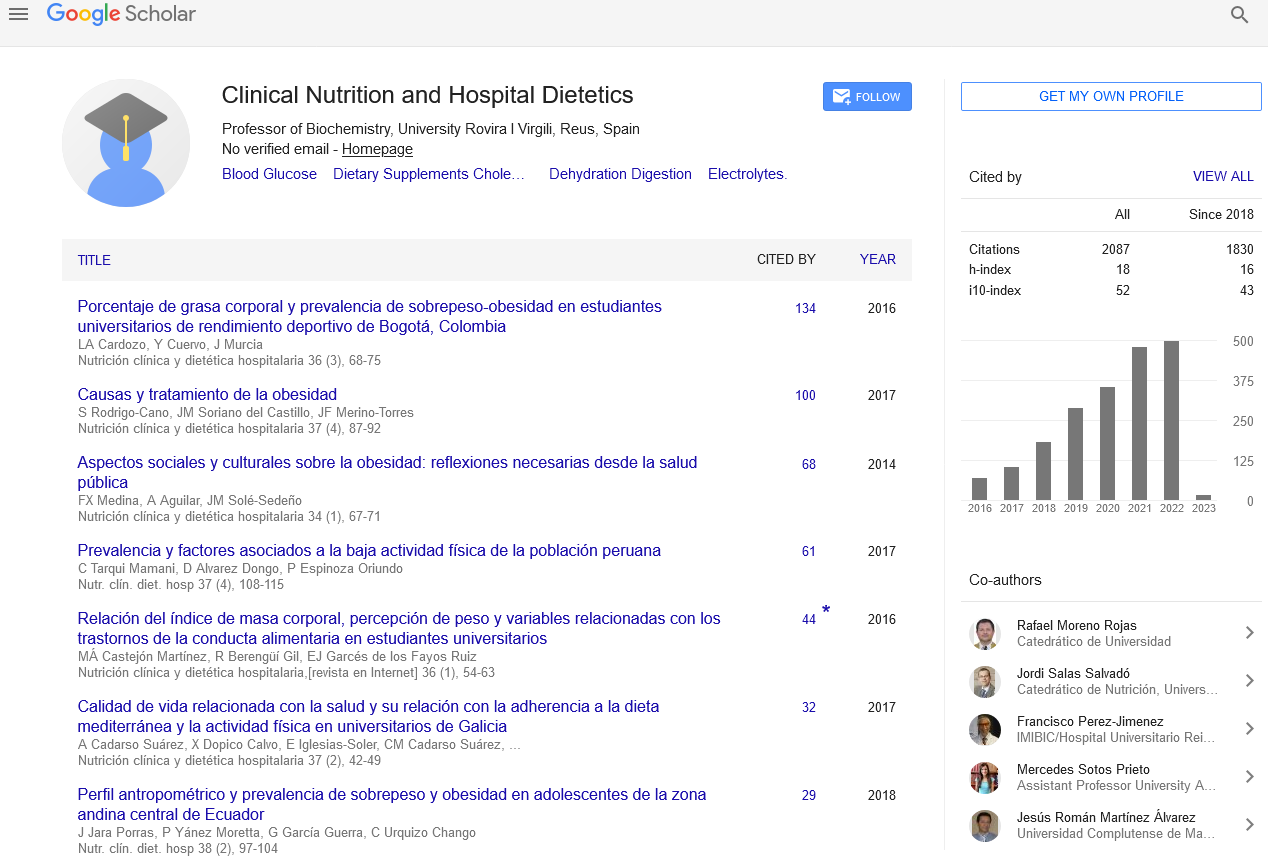Abstract
Nutritional factors associated with phase angle in hematopoietic stem cell pre-transplant patients
Author(s): Moreira, Tyciane Maria Vieira1,2; Sousa, Francisca Isabelle da Silva1; Medeiros, LÃÂvia Torres1; Aguiar, Ana PatrÃÂcia Nogueira2; Viana, Ana Carolina Cavalcante1; Mendonça, Priscila da Silva1; Sampaio, Helena Alves de Carvalho3; Daltro, Ana Filomena Camacho Santos4
Introduction: The phase angle has been used as a nutritional assessment parameter in several clinical con - ditions, including cancer patients.
Objective: To evaluate the prevalence of low phase angle and the relationship with the clinical and nutritional profile in pre-transplant for hematopoietic stem cell patients.
Methods: A cross-sectional study was conducted from may to december 2018 at a universitary hospital in brazilian Northeast. Eighty patients admitted for hematopoietic stem cell transplantation, aged above 18 years was evaluated. Nutritional status was assessed by body mass index, body circumferences, skinfolds, handgrip strength, skeletal muscle mass index. The phase angle was determined by bioelectrical impedance, considering low phase angle below 5 ° for both genders.
Results: The mean age was 47.5 ± 15.2 years and 51.2% were male, with autologous transplantation being the most indicated (71.3%). It was found that 8.8% of patients had malnutrition by body mass index and 65% by adductor pollicis muscle thickness. A prevalence of 27.7% of low phase angle was observed. There was a significant association between low phase angle and age over 60 years (p = 0.002), autologous transplantation (p = 0.04) and low skeletal muscle mass index (p = 0.01).
Discussion: Studies have shown that low phase angle is associated with nutritional risk or malnutrition. However, further studies on the subject are needed in patients with indication for hematopoietic stem cell transplantation.
Conclusion: In this study, there was a considerable prevalence of patients with low phase angle. This indicator was associated with skeletal muscle mass index.
Google Scholar citation report
Citations : 2439
Clinical Nutrition and Hospital Dietetics received 2439 citations as per google scholar report
Indexed In
- Google Scholar
- Open J Gate
- Genamics JournalSeek
- Academic Keys
- JournalTOCs
- ResearchBible
- SCOPUS
- Ulrich's Periodicals Directory
- Access to Global Online Research in Agriculture (AGORA)
- Electronic Journals Library
- RefSeek
- Hamdard University
- EBSCO A-Z
- OCLC- WorldCat
- SWB online catalog
- Virtual Library of Biology (vifabio)
- Publons
- MIAR
- Geneva Foundation for Medical Education and Research
- Euro Pub
- Web of Science
Journal Highlights
- Blood Glucose
- Dietary Supplements
- Cholesterol, Dehydration
- Digestion
- Electrolytes
- Clinical Nutrition Studies
- energy balance
- Diet quality
- Clinical Nutrition and Hospital Dietetics




